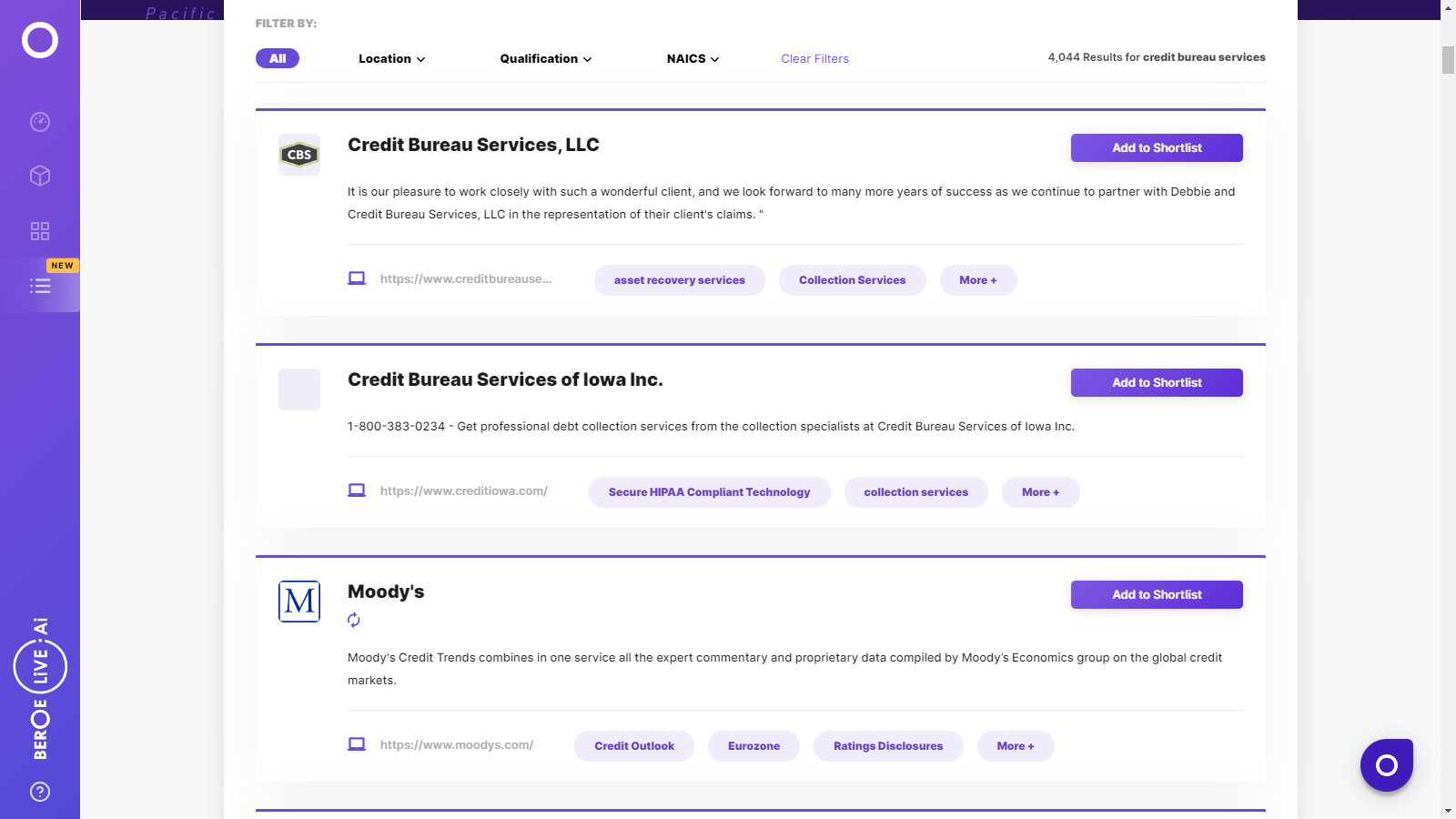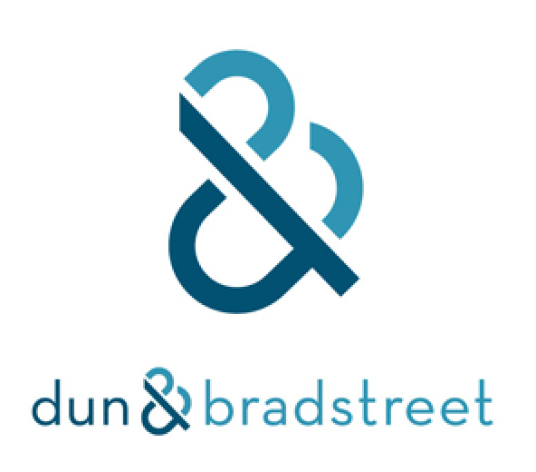CATEGORY
Credit Bureau Services
Beroe LiVE.Ai™
AI-powered self-service platform for all your sourcing decision needs across 1,200+ categories like Credit Bureau Services.
Market Data, Sourcing & Supplier Intelligence, and Price & Cost Benchmarking.
Schedule a DemoCredit Bureau Services Industry Benchmarks
Savings Achieved
(in %)
The average annual savings achieved in Credit Bureau Services category is 6.20%
Payment Terms
(in days)
The industry average payment terms in Credit Bureau Services category for the current quarter is 63.8 days
Compare your category performance against peers and industry benchmarks across 20+ parameters on Beroe LiVE.Ai™
Category Strategy and Flexibility
Engagement Model
Supply Assurance
Sourcing Process
Supplier Type
Pricing Model
Contract Length
SLAs/KPIs
Lead Time
Supplier Diversity
Targeted Savings
Risk Mitigation
Financial Risk
Sanctions
AMEs
Geopolitical Risk
Cost Optimization
Price per Unit Competitiveness
Specification Leanness
Minimum Order Quality
Payment Terms
Inventory Control
The World’s first Digital Market Analyst
Abi, the AI-powered digital assistant brings together data, insights, and intelligence for faster answers to sourcing questions
Abi is now supercharged with GPT4 AI engine. Enjoy the ease of ChatGPT, now on Abi
Credit Bureau Services Suppliers

Find the right-fit credit bureau services supplier for your specific business needs and filter by location, industry, category, revenue, certifications, and more on Beroe LiVE.Ai™.
Schedule a Demo


Use the Credit Bureau Services market, supplier and price information for category strategy creation and Quaterly Business Reviews (QRBs)
Schedule a DemoCredit Bureau Services market report transcript
Credit Bureau Global Market Outlook:
-
The global credit bureau services market is highly mature and competitive with top players vying for market share gain through mergers and acquisitions
-
Increased demand is likely to increase prices in this industry in the next 3-5 years
-
Credit bureaus have responded to COVID-19 by altering the criteria used for rating. However, despite these changes, several corporates are facing an increased cost of capital as a direct impact of rating downgrades
-
Regulatory scrutiny on credit bureaus is increasing across countries, due to the potential economical impact of their response to the COVID-19 crisis, at individual, corporate as well as the country level of economic recovery
Porter's Analysis on Credit Bureau Industry
The barriers to new entrants are high since established players have a higher strength, in terms of capability and reach. Buyers have less power, due to the lack of options and market dominance of global leaders.
Supplier Power
-
Large global players dominate the market and determine market prices to a large extent
-
Regulatory caps on cost at the consumer level protect consumers requiring their credit information to some extent
-
Service differentiation is only based on the number of members in the information-sharing group, specific to a credit bureau and the value-added service capabilities
Barriers to New Entrants
-
The credit bureau industry is highly regulated, as it involves sensitive consumer credit information
-
Apart from investments required, heavy licensing requirements are a major barrier to new entrants
-
Significant cost associated with shifting suppliers, due to existing platforms and data integrations, is also a major barrier for new entrants
Intensity of Rivalry
-
Industry is marked with intense competition among the top global players trying to gain market share through the acquisition of smaller players and the introduction of new products and service offerings
-
Competition results in better quality, cheaper, and increased consumer credit coverage in the database
Threat of Substitutes
-
Regulators are increasingly stressing the importance of not relying too much on credit information for the financial lending process
-
It is too ingrained into both primary and secondary debt markets to be substituted with any alternative product in the near future
Buyer Power
-
Buyers have limited choice and corporates face a steep increase in prices for memberships
-
Buyers have limited negotiation power at local and global levels, due to a less fragmented supply market, high reliance on credit information, and regulatory pressure/compliance needs
Key Technology Trends : Credit Bureau
Global leaders have already adopted data analytics and algorithmic credit scoring. deep learning, neural networks, biometrics, and blockchain are some of the recent innovations in the industry.
-
Data Analytics : With the growing demand for credit from new-to-credit (NTC) customers, credit bureaus are increasingly focusing on custom data analytics and alternative data partnerships with fin-tech companies.
-
Algorithmic Credit Scoring :Higher availability of data has led to more extensive use of multivariable algorithms in the credit scoring process, making traditional logistic regression models with restricted number of variables.
-
Machine Learning, Deep learning, and Neural Networks : Data collected from technology-enabled devices are being used as alternative data sources, to aid in credit evaluation.
-
Biometrics & Block Chain : Biometrics and block chain are expected to play a key role in authenticating identity of consumers, as credit becomes increasingly digital.
Interesting Reads:
Discover the world of market intelligence and how it can elevate your business strategies.
Learn more about how market intelligence can enable informed decision-making, help identify growth opportunities, manage risks, and shape your business's strategic direction.
Get Ahead with AI-Enabled Market Insights Schedule a Demo Now
